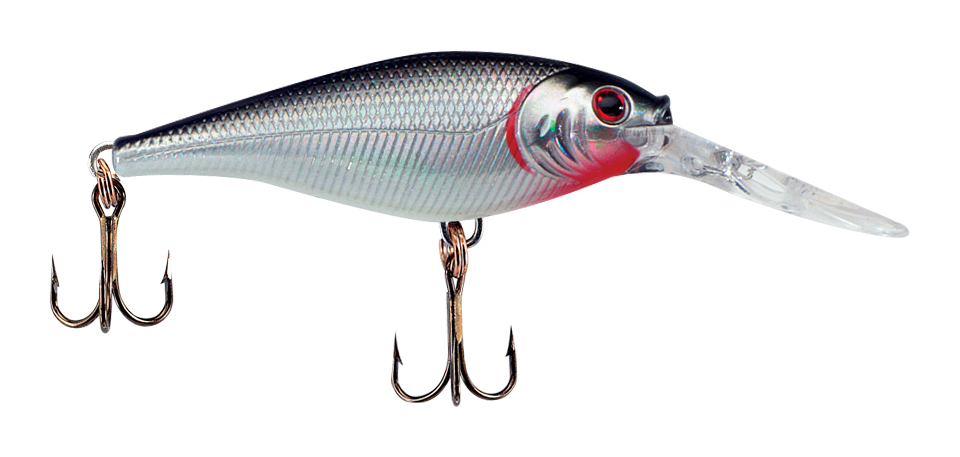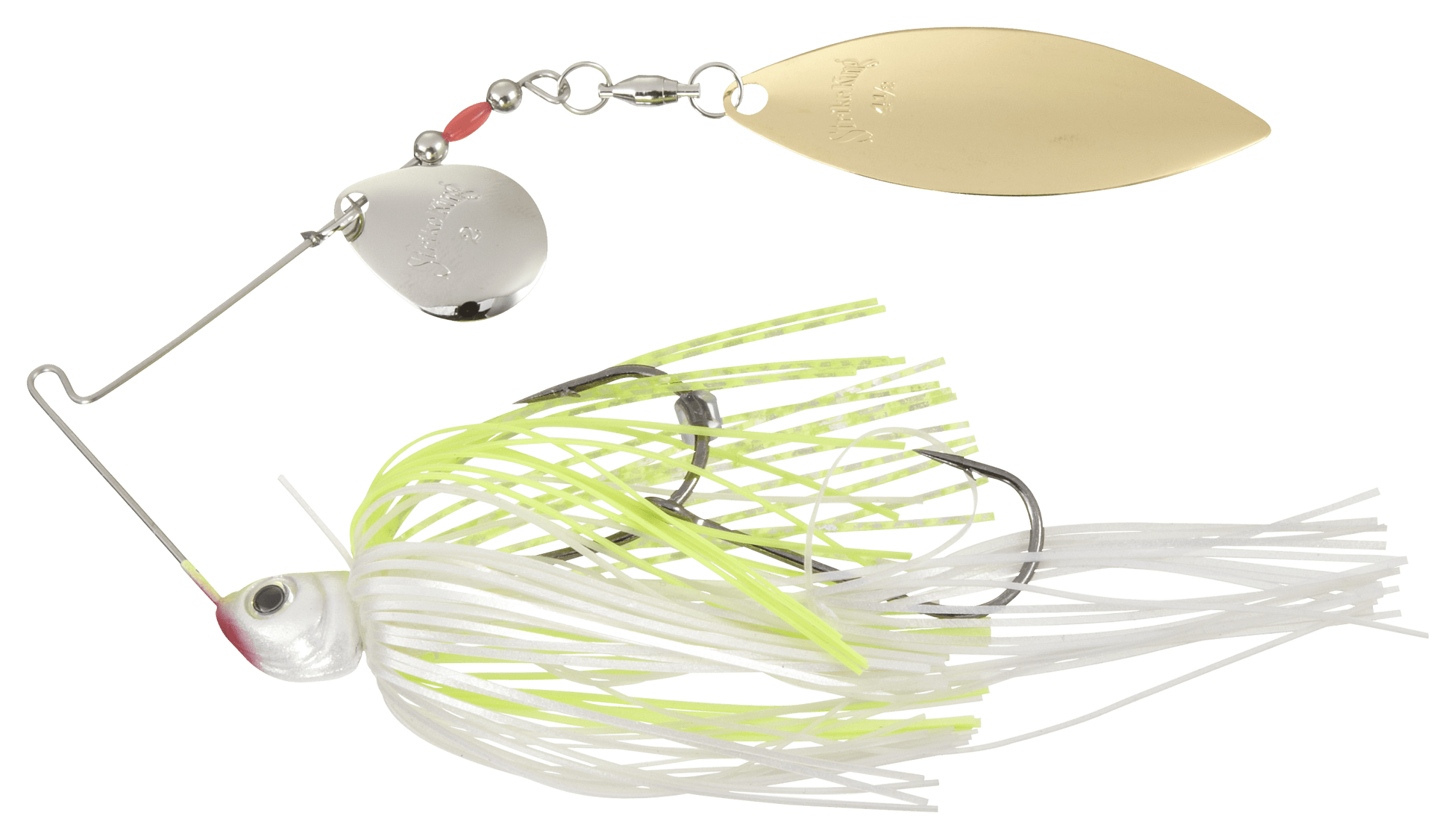To fish for bass at night, use slow-moving, noise-producing lures like soft plastic worms, topwater baits, or bladed spinnerbaits. Choose dark-colored lures to create silhouettes. Target shallow water, structure, cover, and retrieve your lure slowly, allowing bass time to locate and strike your bait.
Once the summer heat begins to bear down on anglers and bass alike, both will become nocturnal creatures, hunting for their prey under the cover of darkness. Fishing for bass at night differs from targeting them during daylight hours.
If you’re wondering how to fish for bass at night, we’ve compiled this article to lay out some of our best night bass fishing tips to help.
This article is part of my Complete Guide to Bass Fishing series that you might be interested in.
Table of Contents
1. Focus on Night Fishing in Summer
Bass fishing at night isn’t a strategy that will yield results all year. This bass fishing method is exclusively related to the hot summer months across most of the United States. Night-time bass fishing usually begins in late May for most of the country as many of the bass have already spawned and are now seeking to feed on anything they can find in the shallow waters around the shorelines of most bodies of water.
Night bass fishing becomes more productive as the summer air heats up. During June, July and August, anglers have the most success fishing at night using various methods. Bass fishing under the cover of darkness will slow productivity for Southeast and Midwest regions around the end of September. Florida is the only state in the country where anglers can usually have success fishing at night in the spring and fall and in the winter in some rare cases.

2. Bait Selection
Bass rely more on their sense of smell and lateral lines to locate prey at night, so the scent and vibration of the bait can be more important than its appearance.
With limited visibility, bass may be less likely to be attracted to brightly colored or flashy lures, and more likely to respond to subtle or natural-looking presentations.
Bass may have different feeding habits at night, with some species being more active and feeding more frequently than during the day. Understanding these habits and selecting a bait that mimics the prey they are feeding on can increase the chances of a successful catch.
Night fishing conditions vary, from calm waters to windy or overcast conditions. Selecting the right bait for the specific conditions can make a big difference in the success of the fishing trip.
The effectiveness of different baits for bass fishing at night can vary depending on the conditions, but some popular options include:
Worms, lizards, and creature baits are often effective for night fishing because they can be rigged in various ways and imitate various prey.
Crankbaits can be effective for night fishing because they make much noise in the water.
Jigs, especially those with trailers, can mimic the look and action of a crawfish or prey that bass feed on at night.
Spinnerbaits can also be effective for night fishing because they create a lot of water vibrations.
Topwater lures such as poppers, frogs, and buzzbaits can be effective at night because they create a lot of surface disturbance.
Bass often feed on a variety of baitfish at night, and popular options including minnows, shads, crickets, and crawfish.
| Lure | Situation |
|---|---|
| Dark-Colored Spinnerbaits | Shallow cover, around structure |
| Dark-Colored Jigs | Flipping and pitching in heavy cover |
| Slow-Rolling Swimbaits | Targeting bass chasing baitfish |
| Dark-Colored Chatterbaits | Around submerged vegetation, grass lines |
| Creature Baits | Texas-rigged around structure or vegetation |
| Topwater Noisy Lures | Surface action, targeting active bass |
| Dark-Colored Crankbaits | Bouncing off cover, such as rocks and wood |
3. Changing Bass Behavior at Night
Largemouth bass are one of the most adept predators in North America’s freshwater lakes and rivers. They use their sense of sight, smell and feel to detect certain creatures and devour them as their next meal. Night fishing for bass involves an angler working to appeal to the fish’s sense of smell and feel more than their sense of sight.
Since vision is very limited at night, bass will find their prey by sensing tiny vibrations in the water and other movements, along with the various scents that their prey produces.
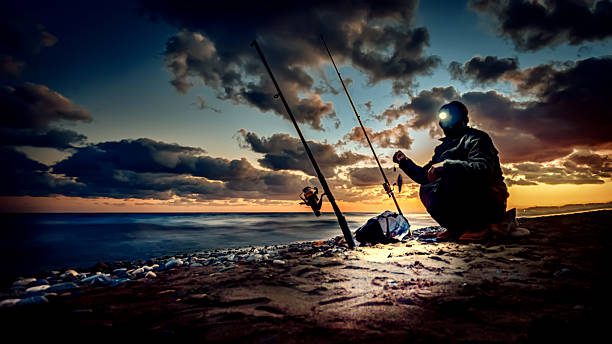
4. Use Dark Colored Lures
When fishing for bass at night, you can usually put away brightly colored lures and tackle as these will be much less effective in the darkness. Some anglers are confused, thinking that using white lures might appeal to bass at night, but the opposite is usually true. Fishing for bass in the dark should mostly involve using dark-colored lures.
You can never go wrong using a black-colored lure when bass fishing at night, but some anglers have found that using different colors in the right conditions can be the key to success. Pay close attention to how much moonlight and cloud cover there is when you’re night fishing and reserve your normal daylight lures for times when there is more abundant moonlight. If there is very little moonlight, use dark or black lures as this will appear more natural to the bass you’re targeting.
5. Get Loud
If there is ever a time in which you want to use a lure that’s especially loud and noisy, there is no better time than fishing for bass at night. Unlike the subtle approaches that sometimes work best during daylight hours, night bass fishing calls for the use of lures that produce lots of noise. The rattle, clicking or bubbling of a lure often greatly increases a fish’s awareness of its location and usually entices bass to strike.
Some of my all-time favorite lures to use for bass fishing at night include large buzzbaits, topwater poppers, whopper poppers, jitterbug poppers, and any crankbait or plug produces a rattling or clicking sound as it is retrieved.
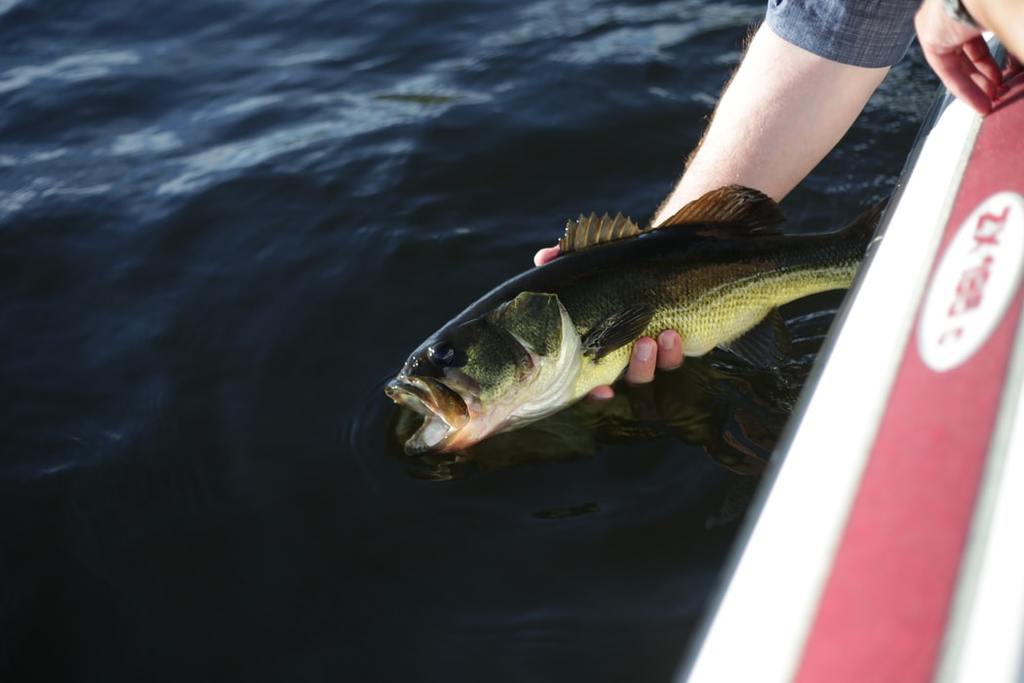
6. Vibration is Key
Bass can detect their prey at night using parts of their body called lateral lines. These lateral lines are sensory organs located on the sides of the fish’s body that can pick up on varying levels of vibration in the water. Bass will use lateral lines when hunting or feeding during the daytime, but darkness is when these sensory organs truly come into play.
To appeal to a bass’ sensory perception, it’s best to use lures specially designed to give off considerable vibration as they are being reeled in. Spinnerbaits are one of my favorite lures in this context, but it’s important to distinguish between Willow Leaf blades and Colorado blades. The round shape of the Colorado blade makes it produce much greater vibration than Willow Leaf or even Indiana blades.
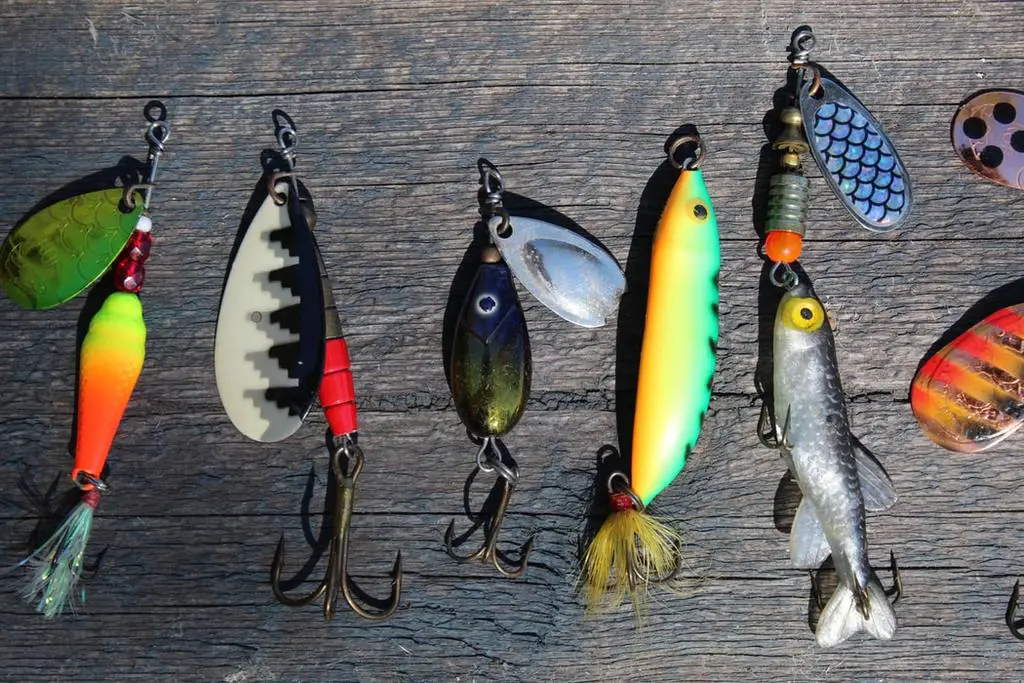
7. Use Black Lights
Black lights are one of the secret weapons for many bass fishing anglers that often find success at night. Black lights allow you to produce a very low-intensity light that will give you a distinct advantage over someone who doesn’t use one for night fishing. Combined with a fluorescent fishing line, your fishing line will glow in the dark, making it incredibly easy to see and monitor.
When using a black light system, you can see a fish tugging on your line before you even feel a bite on the end of your rod, which goes a long way in helping anglers hook and land fish at night. Many different black lights are typically used for bass fishing and some anglers even have their boats outfitted with a black light system that fits onto the boat’s rub rail, which shines 360 degrees around the boat in every direction.
8. Depth Changes
Focus much of your effort on depth changes and shallow areas. Bass won’t usually stay in deep water when it’s dark outside as they use the cover of darkness to move up into shallow water. I’ve caught some of my biggest bass on ledges that connect deep water areas to shallow parts of a lake. If I’m going to be night fishing, I usually start working these ledges or other areas where there is a significant depth change before making casts around the shallow areas near the banks.
9. Other Tips for Fishing at Night
When it comes to night fishing, most of the normal practices for daytime bass fishing also apply. However, consider a few night fishing tips before venturing out in the dark. Keep the clutter on your boat and your fishing area to a minimum, as you never know when you might catch monster bass. Fighting a large fish requires space to control your catch and having rods and reels scattered all over the boat and other gear can lead to knocking some items into the water or tripping and falling in.
It’s also advisable to slow your lures down when retrieving them at night. Bass isn’t nearly as capable of biting a lure on the first strike when it’s dark and slowing down your retrieve will help you pick up more bites. Also, if you’re fishing on large lakes or rivers where there are usually many other anglers on the water, be sure your boat is well-lit so you aren’t at risk of being in an accident.
Conclusion
Night fishing is often just as exciting as fishing for bass in the daytime, but you’ll need to adjust your strategy slightly to experience success. Using the tips and information in this article should give you a good head-start as you begin fishing for bass at night.
Like anything else related to bass fishing, practice is key, so don’t give up if your first night bass fishing trip is unproductive.

